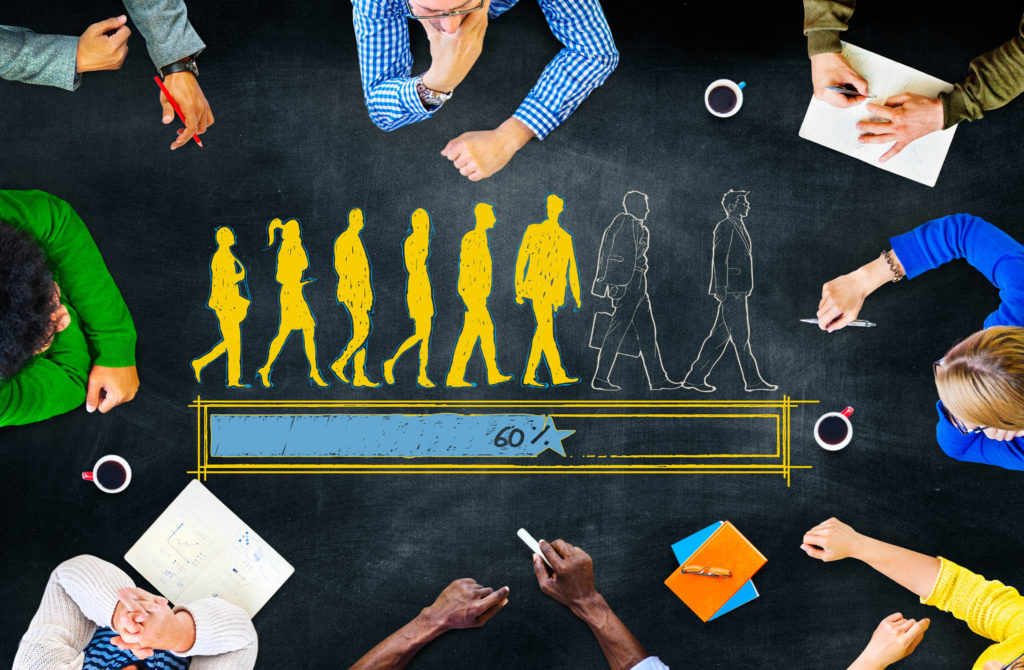
Everything Changes.
Do you remember how we shopped, went to school, or socialized before 1990 and the inception of the world wide web? The advent of the internet and the resulting technology has impacted every aspect of modern life. You can now attend classes, purchase a car, buy groceries, or talk to a stranger on the other side of the world without leaving the comfort of your home. Things that were impossible before the internet’s existence are now considered the basic tenets of doing business in today’s competitive market.
Consumer behavior and expectations tend to adapt to advancements in technology as well as with events such as 911, the creation of social media, and the U.S. subprime mortgage crisis of 2006. We believe the same will be said for life after the COVID-19 pandemic has ended, and the world collectively seeks to embrace it’s new normal.
Let’s look at how COVID-19 is currently impacting consumer’s behavior and how businesses can prepare to adapt to life post-crisis.
Same Challenge. Different Solution.
As many are taking to their homes in an attempt to flatten the curve, the immediate impact on business and consumer behavior is evident. Essential businesses like grocery, cannabis dispensaries and restaurants remain open to provide food, supplies, and quite frankly, our only sense of normalcy. These industries are adopting new strategies and offering new services to meet the needs of today’s evolving consumer. On the other hand, retail, health & wellness, and live events are seeing the most significant impact as various restrictions prevent them from servicing their customers in any way.
Automotive
The automotive industry has taken quite the hit. Overall, we’re seeing fewer car purchases as consumers grapple with mass layoffs and the possible inability to make car payments on time. According to the Center for Automotive Research (CAR), one-week of disruption equates to an estimated annual loss of 94,400 U.S. jobs and $7.3 billion in overall earnings. Many automotive manufacturers are offering relief programs to combat loss of sales and encourage car purchases in an attempt to minimize the impacts on car sales. The pandemic also impacts other segments of the auto industry, such as car washes, tire stores, and service repair shops, which remain open but are servicing fewer customers.
Cannabis
Consumers are anxious and worried about their finances, jobs, and loved ones. This is a stressful time, and many are turning to cannabis, CBD and related products to manage stress and anxiety. Dispensaries are seeing more foot traffic and sales have increased by 20-25% for some dispensaries.
Grocery
While the grocery industry has proven to be the most relevant and resilient industry during the pandemic, this has not come without its own unique set of challenges. Supply chains are being pushed to their limits as they focus on meeting the increased demand of consumers. More positively, grocers have seen increased foot traffic as well as an increase of curbside pickup, deliveries, and in-app ordering. Some grocery stores have begun to offer exclusive shopping hours for seniors and people with disabilities to help limit the most sensitive consumer’s exposure to the virus. Grocery apps like Instacart and Favor have also seen spikes as consumers seek to follow social distancing and stay-at-home restrictions.
Restaurants
Restaurants have been one of the hardest-hit industries. More specifically, regional and family-owned restaurant chains who may lack the resources, tools, and capital to stand up new services quickly. Some restaurants, though, are receiving the support of their communities through gift card purchases that provide short-term cash flow but allow customers to patronize businesses at a later time. Others are utilizing their mobile programs and apps to provide additional ordering options and contactless payment, which have seen an increase of over 100% increase in downloads.
You have the key.
Historically, we know that once consumers embrace new and convenient ways to interact with their favorite brands, these new services will likely become the rule and not the exception. Loyalty programs, various delivery options, SMS updates, and gift cards will move from being nice-to-have to have-to-have solutions and businesses that adapt to the expanded expectations of consumers stand to be the most prepared to survive the current crisis. With additional touchpoints around how consumers interact with brands, there will also be an increased need to identify, understand, and motivate consumers using data ingested from more disparate systems yet with a more personalized output.
Now is truly the best time to get to “know” your customers and understand what future value they can unlock for your business. Now more than ever is the time to bridge your customers’ expectations with the capabilities of your business. One way to do so is through Customer Data Platforms (CDP). A CDP can unify and store your customers’ data from multiple channels so that you can create a marketing plan based on all available information. CDPs are designed to clean up your data, remove any duplicated or outdated information, and create comprehensive customer profiles. A customer profile that can tell you what message to deliver to what customers at the exact time they need it most.
Once the COVID-19 pandemic is over, understanding your customers’ new preferences and ways their interaction with your brand has evolved through this crisis will be as crucial as ever. You must have systems in place to make your business future proof by integrating with data from both old and new sources. Your customers will be the most crucial piece in the early stages of recovery. A Customer Data Platform could be the tool needed to ensure you are ready to rebuild when recovery begins.